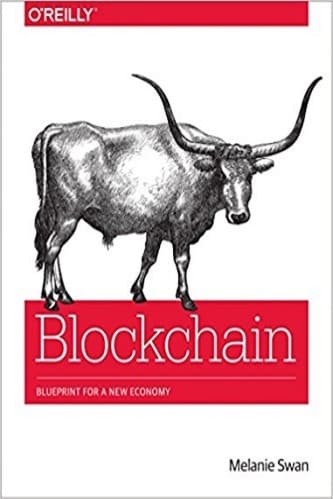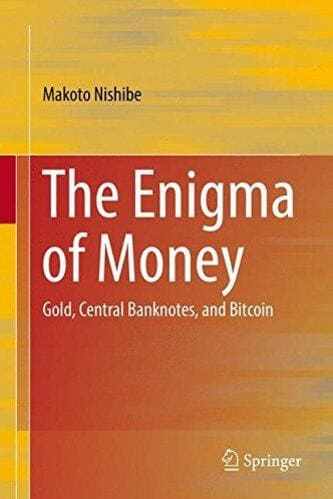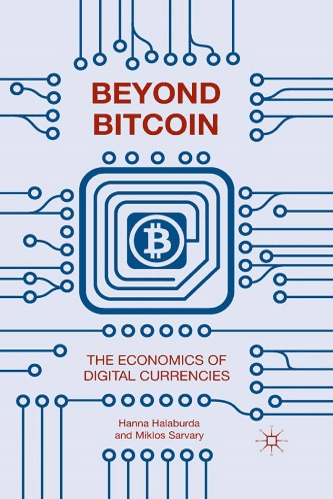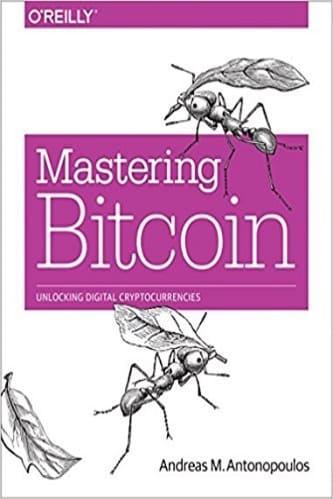Blockchain: Blueprint for a New Economy
$10.00
| Author(s) | |
|---|---|
| Pages |
149 |
| Format |
|
| Publication Year |
2015 |
Blockchain: Blueprint for a New Economy takes you beyond the currency (“Blockchain 1.0”) and smart contracts (“Blockchain 2.0”) to demonstrate how the blockchain is in position to become the fifth disruptive computing paradigm after mainframes, PCs, the Internet, and mobile/social networking.
Introduction:
The economic, political, humanitarian, and legal system benefits of Bitcoin and blockchain technology start to make it clear that this is potentially an extremely disruptive technology that could have the capacity for reconfiguring all aspects of society and its operations.
For organization and convenience, the different kinds of existing and potential activities in the blockchain revolution are broken down into three categories: Blockchain 1.0, 2.0, and 3.0. Blockchain 1.0 is currency, the deployment of cryptocurrencies in applications related to cash, such as currency transfer, remittance, and digital payment systems.
Blockchain 2.0 is contracts, the entire slate of economic, market, and financial applications using the blockchain that are more extensive than simple cash transactions: stocks, bonds, futures, loans, mortgages, titles, smart property, and smart contracts. Blockchain 3.0 is blockchain applications beyond currency, finance, and markets—particularly in the areas of government, health, science, literacy, culture, and art.
The blockchain is the public ledger of all Bitcoin transactions that have ever been executed. It is constantly growing as miners add new blocks to it (every 10 minutes) to record the most recent transactions. The blocks are added to the blockchain in a linear, chronological order. Each full node (i.e., every computer connected to the Bitcoin network using a client that performs the task of validating and relaying transactions) has a copy of the blockchain, which is downloaded automatically when the miner joins the Bitcoin network.
The blockchain has complete information about addresses and balances from the genesis block (the very first transactions ever executed) to the most recently completed block. The blockchain as a public ledger means that it is easy to query any block explorer for transactions associated with a particular Bitcoin address—for example, you can look up your own wallet address to see the transaction in which you received your first Bitcoin.
The blockchain is seen as the main technological innovation of Bitcoin because it stands as a “trustless” proof mechanism of all the transactions on the network. Users can trust the system of the public ledger stored worldwide on many different decentralized nodes maintained by “miner-accountants,” as opposed to having to establish and maintain trust with the transaction counterparty (another person) or a thirdparty intermediary (like a bank).
The blockchain as the architecture for a new system of decentralized trustless transactions is the key innovation. The blockchain allows the disintermediation and decentralization of all transactions of any type between all parties on a global basis.
Contents:
- Blockchain 1.0: Currency
- Blockchain 2.0: Contracts
- Blockchain 3.0: Justice Applications Beyond Currency, Economics, and Markets
- Blockchain 3.0: Efficiency and Coordination Applications Beyond Currency, Economics, and Markets
- Advanced Concepts
- Limitations
- Conclusion
Blockchain: Blueprint for a New Economy By Melanie Swan PDF
19 reviews for Blockchain: Blueprint for a New Economy
Clear filtersOnly logged in customers who have purchased this product may leave a review.










Violeta Herman (verified owner) –
worked exactly as advertised
Kaden Moreno (verified owner) –
Good book and great knowledge.
Charlotte Meyer (verified owner) –
The book opened my eyes to the potential of the blockchain. Wow. Silly. I don’t believe it will be mainstream in my lifetime but the thought of a future where blockchain is an integral part of society is fantastic.
Phoenix Dominguez (verified owner) –
If you want to truly understand Blockchain – this book is a must and every page is packed with important pieces to the puzzle.
Ryan Herring (verified owner) –
Good for ppl wanting to know more about BlockChain technology. A easy read but dont expect much details as its just 120 pages.
Zayd Dixon (verified owner) –
Poor introduction, largely unstructured. If you expect to learn anything from this book in 2017 you’ll be disappointed. Books like this devalue the O’Reilly imprint.
Blakely McCarthy (verified owner) –
This is a clear and useful introduction to lay readers (non-programmers who yet have a technical way of understanding how things work). There are similarities in the Blockchain with “money,” but Swan clarifies how trusted-transfer of digital tokens can be enhanced into many other systems (e.g. clearing of payments, that is exchanging of asset values without resort to government-imposed accounting rules, or “bank secrecy”).
Alana Cruz (verified owner) –
First of all, lets get the basics clear. This book is NOT about the technology of blockchains. It makes no attempt to explain how blockchains work. Instead, it tries to explain how blockchains might be very useful in many different applications.
Ms. Swan is clearly knowledgable in this area (or fakes it really well – I cannot judge). And she was working at a disadvantage in writing this book in 2014, when bitcoin was just getting up and running. It may well be that there are some really great insights here.
But oh, how will we ever know? The information and the judgments are hidden under some of the worst prose I have seen in some time, even in a tech book. One example at random, the first sentence of Chapter 3: “Not only is there the possibility that blockchain technology could reinvent every category of monetary markets, payments, financial services, and economics…” and so on for another two lines. I count three trisylables, 4 quatrosylables, and one pentasylable. In two lines. Part of one sentence. At this point I gave up.
Doesn’t O’Reilly have any editors anymore?
Leif Gould (verified owner) –
A decent overview if you are new to the technology. I would rate higher but it feels like it is trying to enumerate everything about blockchain usage but not at any depth. While normally a field study is good, I feel it just need real depth. The lack of depth in my opinion is partly due to the fact we are still figuring out how to use blockchain tech. It is hot, and there are lots of proof of concepts, but in my experience, not real production worthy implementations. I do look forward to a new edition where we finally start to see what really worked (aka more than 6 month long projects between pre-established relationships and not just Bitcoin).
Kyra Haley (verified owner) –
Not the plethora of information I was expecting. I bought Bitcoin: Programming the open blockchain and I was hoping this book would measure up. Unfortunately, it did not. I was hoping it would go in depth on how blockchain could be used, with real life examples, unfortunately, at barely 100ish pages, it just gives very general ideas for blockchain technology. Good for beginners, not for programmers. It was only $10 but I paid for the expedited shipping….big mistake. I could’ve googled most of this information.
Devin Correa (verified owner) –
An excellent, highly detailed, overview on blockchain technologies at a high level. It is not a ‘how-to-code’ book. The content, writing style, and print quality are all top notch. Amazing work.
Dani Whitehead (verified owner) –
The book is work-under-progress: such as blockchain. However, in here I got to understand: self-bootstrapping as a new business concept. I find that very interesting, I am also very CONVINCED that the blockchain technology will bring a new level of friendliness in the context of the online.
Tristan Lucas (verified owner) –
A decent introduction (not in-depth) to blockchain and a decent survey of blockchain applications. Keep in mind this book is a bit dated so the information relative to applications built on blockchain has in many cases diverged from where the writer saw them or expected them to go. Regardless, it is written SO MUCH better than many blockchain books I have come across. Overall, not the best book on the market but I have seen so much worse. Middle of the pack. It has something to contribute.
Valery Manning (verified owner) –
This book is for those interested in the theoretical, philosophical and societal impact of cryptocurrencies.
If you want to learn how blockchains work, you should pick up “Mastering Bitcoin: Unlocking Digital Cryptocurrencies”, that is absolutely not what this book is for.
For those wanting a bigger picture of where blockchain technology is going to take us, this is the book you want.
Elias Arroyo (verified owner) –
Too much preaching, but OK. First chapters were good; then, not so much,,,,
Erin Ahmed (verified owner) –
The book is very informative about the history of cryptocurrencies and the advent of blockchain technology. But it lacks any theoretical background about how it works. If you are interested to learn the mathematics behind it, or even cryptographic protocols it’s not a proper book for you. However, it is a comprehensive review of what has been done and what has been going on in this field.
Denver Evans (verified owner) –
Don’t buy this “book”. You’ll get more out of reading the wikipedia entry.
I got this text from the library, so thank God I didn’t pay for it. It’s so bad though that I really deserve compensation for my time spent walking to the library, reading 20 or so pages of the 100, and writing this review. It’s a 100 page blog for people clueless to most tech.
The only justice is that this authors’ garbage, money-grab “book” is now associated to their name. No amount would get me to put my name on this crap.
Seth Brown (verified owner) –
the business scenarios in this book are meaningless (the author has no idea about how a real world works) or do not create any value w/ blockchain.
Juelz Escobar (verified owner) –
I have no doubt that Satoshi Nakamoto’s spawn is a disruptive technology. But until it becomes easier to use than trying to write a review on this pdf or trying to read this dense material no amount of extrapolation by the author will make it so.